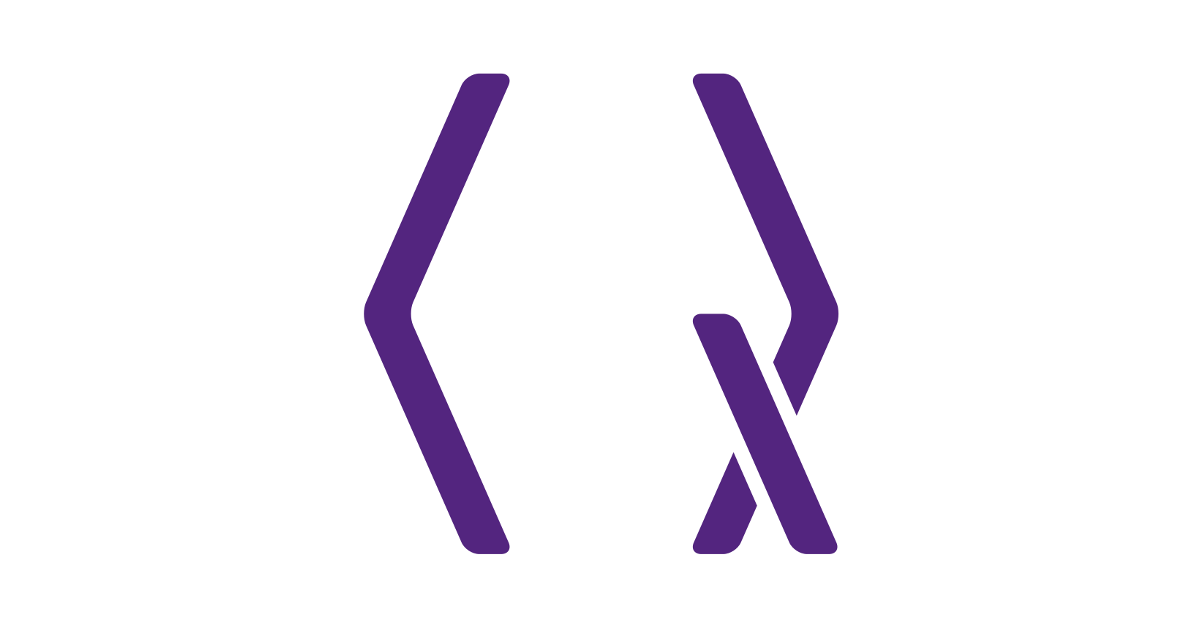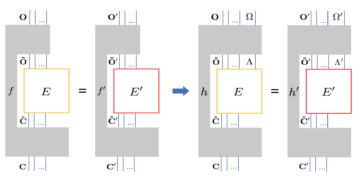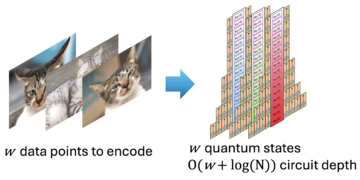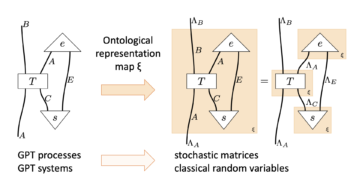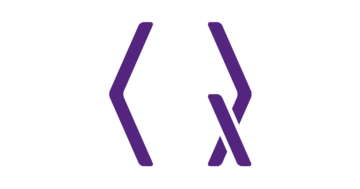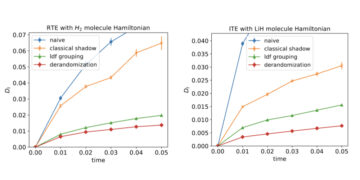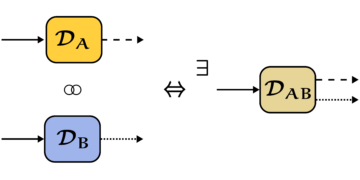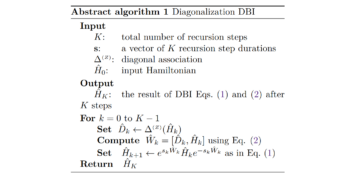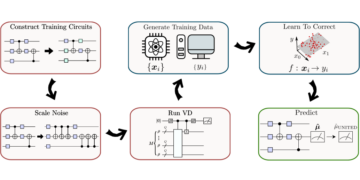Institut für Theoretische Physik, Heinrich-Heine-University Düsseldorf, Germany
Find this paper interesting or want to discuss? Scite or leave a comment on SciRate.
Abstract
The performance of quantum error correction can be significantly improved if detailed information about the noise is available, allowing to optimize both codes and decoders. It has been proposed to estimate error rates from the syndrome measurements done anyway during quantum error correction. While these measurements preserve the encoded quantum state, it is currently not clear how much information about the noise can be extracted in this way. So far, apart from the limit of vanishing error rates, rigorous results have only been established for some specific codes.
In this work, we rigorously resolve the question for arbitrary stabilizer codes. The main result is that a stabilizer code can be used to estimate Pauli channels with correlations across a number of qubits given by the pure distance. This result does not rely on the limit of vanishing error rates, and applies even if high weight errors occur frequently. Moreover, it also allows for measurement errors within the framework of quantum data-syndrome codes. Our proof combines Boolean Fourier analysis, combinatorics and elementary algebraic geometry. It is our hope that this work opens up interesting applications, such as the online adaptation of a decoder to time-varying noise.
Popular summary
► BibTeX data
► References
[1] A. Robertson, C. Granade, S. D. Bartlett, and S. T. Flammia, Tailored codes for small quantum memories, Phys. Rev. Applied 8, 064004 (2017).
https://doi.org/10.1103/PhysRevApplied.8.064004
[2] J. Florjanczyk and T. A. Brun, In-situ adaptive encoding for asymmetric quantum error correcting codes (2016).
https://doi.org/10.48550/ARXIV.1612.05823
[3] J. P. Bonilla Ataides, D. K. Tuckett, S. D. Bartlett, S. T. Flammia, and B. J. Brown, The XZZX surface code, Nat. Commun. 12, 2172 (2021).
https://doi.org/10.1038/s41467-021-22274-1
[4] O. Higgott, Pymatching: A python package for decoding quantum codes with minimum-weight perfect matching (2021).
https://doi.org/10.48550/ARXIV.2105.13082
[5] E. Dennis, A. Kitaev, A. Landahl, and J. Preskill, Topological quantum memory, J. Math. Phys. 43, 4452 (2002), arXiv:quant-ph/0110143 [quant-ph].
https://doi.org/10.1063/1.1499754
arXiv:quant-ph/0110143
[6] N. H. Nickerson and B. J. Brown, Analysing correlated noise on the surface code using adaptive decoding algorithms, Quantum 3, 131 (2019).
https://doi.org/10.22331/q-2019-04-08-131
[7] S. T. Spitz, B. Tarasinski, C. W. J. Beenakker, and T. E. O’Brien, Adaptive weight estimator for quantum error correction in a time-dependent environment, Advanced Quantum Technologies 1, 1870015 (2018).
https://doi.org/10.1002/qute.201870015
[8] Z. Babar, P. Botsinis, D. Alanis, S. X. Ng, and L. Hanzo, Fifteen years of quantum LDPC coding and improved decoding strategies, IEEE Access 3, 2492 (2015).
https://doi.org/10.1109/ACCESS.2015.2503267
[9] S. Huang, M. Newman, and K. R. Brown, Fault-tolerant weighted union-find decoding on the toric code, Physical Review A 102, 10.1103/physreva.102.012419 (2020).
https://doi.org/10.1103/physreva.102.012419
[10] C. T. Chubb, General tensor network decoding of 2d pauli codes (2021).
https://doi.org/10.48550/ARXIV.2101.04125
[11] A. S. Darmawan and D. Poulin, Linear-time general decoding algorithm for the surface code, Physical Review E 97, 10.1103/physreve.97.051302 (2018).
https://doi.org/10.1103/physreve.97.051302
[12] J. J. Wallman and J. Emerson, Noise tailoring for scalable quantum computation via randomized compiling, Phys. Rev. A 94, 052325 (2016).
https://doi.org/10.1103/PhysRevA.94.052325
[13] M. Ware, G. Ribeill, D. Ristè, C. A. Ryan, B. Johnson, and M. P. da Silva, Experimental Pauli-frame randomization on a superconducting qubit, Phys. Rev. A 103, 042604 (2021).
https://doi.org/10.1103/PhysRevA.103.042604
[14] S. J. Beale, J. J. Wallman, M. Gutiérrez, K. R. Brown, and R. Laflamme, Quantum error correction decoheres noise, Phys. Rev. Lett. 121, 190501 (2018).
https://doi.org/10.1103/PhysRevLett.121.190501
[15] S. T. Flammia and R. O’Donnell, Pauli error estimation via population recovery, Quantum 5, 549 (2021).
https://doi.org/10.22331/q-2021-09-23-549
[16] R. Harper, W. Yu, and S. T. Flammia, Fast estimation of sparse quantum noise, PRX Quantum 2, 010322 (2021).
https://doi.org/10.1103/PRXQuantum.2.010322
[17] S. T. Flammia and J. J. Wallman, Efficient estimation of Pauli channels, ACM Transactions on Quantum Computing 1, 10.1145/3408039 (2020).
https://doi.org/10.1145/3408039
[18] R. Harper, S. T. Flammia, and J. J. Wallman, Efficient learning of quantum noise, Nat. Phys. 16, 1184 (2020).
https://doi.org/10.1038/s41567-020-0992-8
[19] Y. Fujiwara, Instantaneous quantum channel estimation during quantum information processing (2014).
https://doi.org/10.48550/ARXIV.1405.6267
[20] A. G. Fowler, D. Sank, J. Kelly, R. Barends, and J. M. Martinis, Scalable extraction of error models from the output of error detection circuits (2014).
https://doi.org/10.48550/ARXIV.1405.1454
[21] M.-X. Huo and Y. Li, Learning time-dependent noise to reduce logical errors: real time error rate estimation in quantum error correction, New J. Phys. 19, 123032 (2017).
https://doi.org/10.1088/1367-2630/aa916e
[22] J. R. Wootton, Benchmarking near-term devices with quantum error correction, Quantum Science and Technology 5, 044004 (2020).
https://doi.org/10.1088/2058-9565/aba038
[23] J. Combes, C. Ferrie, C. Cesare, M. Tiersch, G. J. Milburn, H. J. Briegel, and C. M. Caves, In-situ characterization of quantum devices with error correction (2014).
https://doi.org/10.48550/ARXIV.1405.5656
[24] T. Wagner, H. Kampermann, D. Bruß, and M. Kliesch, Optimal noise estimation from syndrome statistics of quantum codes, Phys. Rev. Research 3, 013292 (2021).
https://doi.org/10.1103/PhysRevResearch.3.013292
[25] J. Kelly, R. Barends, A. G. Fowler, A. Megrant, E. Jeffrey, T. C. White, D. Sank, J. Y. Mutus, B. Campbell, Y. Chen, Z. Chen, B. Chiaro, A. Dunsworth, E. Lucero, M. Neeley, C. Neill, P. J. J. O’Malley, C. Quintana, P. Roushan, A. Vainsencher, J. Wenner, and J. M. Martinis, Scalable in situ qubit calibration during repetitive error detection, Phys. Rev. A 94, 032321 (2016).
https://doi.org/10.1103/PhysRevA.94.032321
[26] A. Ashikhmin, C.-Y. Lai, and T. A. Brun, Quantum data-syndrome codes, IEEE Journal on Selected Areas in Communications 38, 449 (2020).
https://doi.org/10.1109/JSAC.2020.2968997
[27] Y. Fujiwara, Ability of stabilizer quantum error correction to protect itself from its own imperfection, Phys. Rev. A 90, 062304 (2014), arXiv:1409.2559 [quant-ph].
https://doi.org/10.1103/PhysRevA.90.062304
arXiv:1409.2559
[28] N. Delfosse, B. W. Reichardt, and K. M. Svore, Beyond single-shot fault-tolerant quantum error correction, IEEE Transactions on Information Theory 68, 287 (2022).
https://doi.org/10.1109/tit.2021.3120685
[29] A. Zia, J. P. Reilly, and S. Shirani, Distributed parameter estimation with side information: A factor graph approach, in 2007 IEEE International Symposium on Information Theory (2007) pp. 2556–2560.
https://doi.org/10.1109/ISIT.2007.4557603
[30] R. O’Donnell, Analysis of Boolean Functions (Cambridge University Press, 2014).
https://doi.org/10.1017/CBO9781139814782
[31] Y. Mao and F. Kschischang, On factor graphs and the fourier transform, IEEE Trans. Inf. Theory 51, 1635 (2005).
https://doi.org/10.1109/TIT.2005.846404
[32] D. Koller and N. Friedman, Probabilistic Graphical Models: Principles and Techniques – Adaptive Computation and Machine Learning (The MIT Press, 2009).
[33] M. Aigner, A Course in Enumeration, Vol. 238 (Springer-Verlag Berlin Heidelberg, 2007).
https://doi.org/10.1007/978-3-540-39035-0
[34] S. Roman, Field Theory (Springer, New York, 2006).
https://doi.org/10.1007/0-387-27678-5
[35] T. Chen and LiTien-Yien, Solutions to systems of binomial equations, Annales Mathematicae Silesianae 28, 7 (2014).
https://journals.us.edu.pl/index.php/AMSIL/article/view/13987
[36] A. S. Hedayat, N. J. A. Sloane, and J. Stufken, Orthogonal arrays: theory and applications (Springer New York, NY, 1999).
https://doi.org/10.1007/978-1-4612-1478-6
[37] P. Delsarte, Four fundamental parameters of a code and their combinatorial significance, Information and Control 23, 407 (1973).
https://doi.org/10.1016/S0019-9958(73)80007-5
[38] B. M. Varbanov, F. Battistel, B. M. Tarasinski, V. P. Ostroukh, T. E. O’Brien, L. DiCarlo, and B. M. Terhal, Leakage detection for a transmon-based surface code, NPJ Quantum Inf. 6, 10.1038/s41534-020-00330-w (2020).
https://doi.org/10.1038/s41534-020-00330-w
[39] P. Abbeel, D. Koller, and A. Y. Ng, Learning factor graphs in polynomial time & sample complexity (2012).
https://doi.org/10.48550/ARXIV.1207.1366
[40] R. A. Horn and C. R. Johnson, Matrix Analysis, 2nd ed. (Cambridge University Press, 2012).
https://doi.org/10.1017/CBO9780511810817
Cited by
[1] Andreas Elben, Steven T. Flammia, Hsin-Yuan Huang, Richard Kueng, John Preskill, Benoît Vermersch, and Peter Zoller, “The randomized measurement toolbox”, arXiv:2203.11374.
[2] Armands Strikis, Simon C. Benjamin, and Benjamin J. Brown, “Quantum computing is scalable on a planar array of qubits with fabrication defects”, arXiv:2111.06432.
The above citations are from SAO/NASA ADS (last updated successfully 2022-09-19 14:05:17). The list may be incomplete as not all publishers provide suitable and complete citation data.
Could not fetch Crossref cited-by data during last attempt 2022-09-19 14:05:15: Could not fetch cited-by data for 10.22331/q-2022-09-19-809 from Crossref. This is normal if the DOI was registered recently.
This Paper is published in Quantum under the Creative Commons Attribution 4.0 International (CC BY 4.0) license. Copyright remains with the original copyright holders such as the authors or their institutions.

